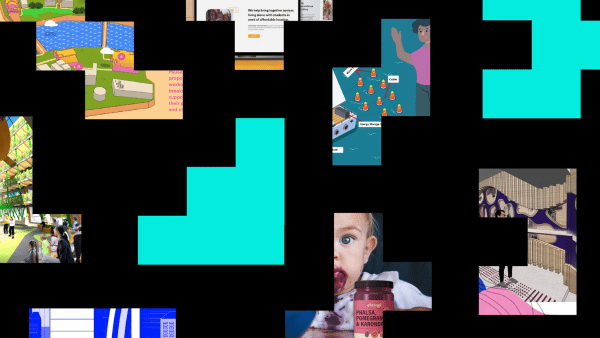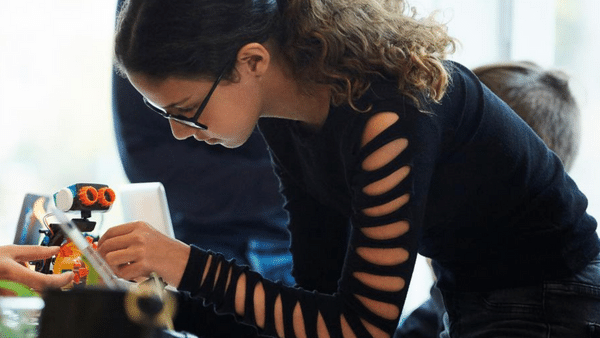London, 17 November - In recent years, the world’s systems have experienced deep shocks as a result of social, health, economic and environmental crises.
Design as a practice both responds to and influences the world around us. Historically, this has meant its principal aim was to make things more desirable, more efficient, and more profitable for human beings.
However, with time this purpose has been irrevocably altered. What was once linear is becoming circular, what was extractive is starting to be regenerative, and what was human-focused has begun to put nature first. In other words, novelty is being replaced by longevity.
The RSA (royal society for arts, manufactures and commerce) is awarding nine designers the title ‘Royal Designers of Industry’ (RDI). Granted annually, it is the highest accolade in the UK for designers given in recognition of sustained design excellence, work of aesthetic value and significant benefit to society.
The visionary designers being awarded RDI and honorary RDI titles for their work in their respective design practices are:
- Speculative design – Anab Jain and Jon Ardern (Superflux)
- Regenerative design – Sebastian Cox
- New media design – John Warwicker (DaGama)
- Costume design – Jenny Beavan (OBE)
- Product design – Stefan Diez
- Design research – Andrea Trimarchi and Simone Farresin (Formafantasma)
- Architecture - Diébédo Francis Kéré
Tom Lloyd, Master of The Faculty of Royal Designers for Industry, said, “Design is able to use times of crisis and uncertainty as an opportunity to innovate and experiment. That is why it can and must play a leading role in the transition to a more balanced, sustainable, and equitable system.”
“Since the RDI faculty was established 86 years ago, the nature of design has changed profoundly. It is now our mission to continue to encourage and celebrate the evolution of designers, trends, and practices within design so that we create a world where both people and nature can live in harmony.”
Joanna Choukeir, Director of Design and Innovation at the RSA added “Each of the challenges we are up against – social, economic, and environmental, has a myriad of intrinsically linked and interdependent root causes. To tackle these, we need to entirely re-imagine and redesign our futures, to be conducive to all life so that people, places and planet can flourish.
“That is why the RDI faculty brings together such a diverse range of design leaders who specialise in both established and emergent design practices. Only through collaboration, innovation and experimentation can we shape inclusive, regenerative, and equitable futures for all.”
This year, the RDI Address will be given by RDI Jo da Silva, Director of Arup. An industry leader in resilient design, she will speak about her own journey in cultivating design expertise to reduce risk and enhance the resilience of communities, cities, and infrastructure.
Summarising her talk, Jo explained, “Our capacity to survive, adapt and flourish relies on designing a future that is concurrently sustainable and resilient. Whereas sustainability is accepted as a key tenet of good design, resilient design is still in its infancy seeking greater understanding and definition.”
About the new RDIs
RDIs
Award-winning costume designer, Jenny Beavan studied Theatre Design at the Central School of Art and Design. Since the widely acclaimed ‘Mad Max Fury Road’ she has worked on a variety of films including 'A Cure For Wellness', ‘Life' and ‘Cruella'. Recent work includes 'Mrs Harris goes to Paris', 'White Bird' and ‘Furiosa’.
John Warwicker is currently a Professor in Graphic Design at The University of Melbourne and a visiting Professor at Tokyo Zokei University. During the 1980s he designed for the record industry while later co-foundering the multi-disciplinary design collective tomato. Furthermore, in 2016 he received TTDC special prize for the curatorship and design of the O tomato Parco exhibition in Tokyo celebrating tomato’s 25th anniversary.
Sebastian Cox is a furniture designer, maker and environmentalist. Sebastian founded his carbon-counting, forward-thinking, zero-waste workshop and design studio in 2010 on the principle that the past can be used to design and make the future. He produces heirloom furniture, lighting and home accessories and collaborates with other material experts who share his vision for a regenerative material future.
Anab Jain is a designer, filmmaker, futurist and educator, and co-founder of Superflux, alongside Jon Ardern. Superflux is a critical futures and speculative design studio that imagines and builds future worlds to be experienced in the present. In 2021, Superflux won Dezeen’s ‘Design Studio of the Year’. Moreover, Anab has served as Professor of Design Investigations at the University of Applied Arts, Vienna, and recently received an Honorary Doctorate Award from the University of the Arts, London.
Jon Ardern is an artist, designer, technologist. Jon and his partner Anab went on to found the interdisciplinary experiential futures studio Superflux. Superflux engages speculative art and design practices to catalyse imagination around alternative futures. This innovative strategy bypasses statistical data to generate tangible connections between present and future, imbuing abstract predictions with emotional resonance.
Hon. RDIs
Francis Kéré is an internationally renowned Burkinabè architect and the 2022 Laureate of the Pritzker Architecture Prize. Recognised for his pioneering approach to design and sustainable modes of construction, his vocation to become an architect comes from a personal commitment to serve the community he grew up in. He has gone on to become one of the world’s most distinguished contemporary architects, with a vision that is at once utopian and pragmatic.
Andrea Trimarchi and Simone Farresin are heads of the GEO–Design department at Design Academy in Eindhoven. The pair founded Formafantasma, a research-based design studio investigating the ecological, historical, political and social forces shaping the discipline of design today. The studio aims to facilitate a deeper understanding of our natural and built environments and to propose transformative interventions through design and its material, technical, social, and discursive possibilities.
Stefan Diez is a Munich-based industrial designer who has been at the forefront of transforming the ways in which contemporary products are developed and manufactured. Currently head of the Industrial Design programme at the University of Applied Arts in Vienna while his studio DIEZ OFFICE is now located in a former joinery, which works across different typologies to bring together technical expertise, creative experimentation and a rigorous commitment to sustainability.
Related articles
-
Student Design Awards 2023: meet the shortlist
News
Aoife O'Doherty
The RSA Student Design Awards 2023 shortlist has been announced. Across nine briefs, 70 students are working to bring positive social change to people, place and planet.
-
Design mentors: supporting innovation in young designers
Blog
Milla Nakkeeran
As we conduct our mentor visits for the 2022-23 Pupil Design Awards read why the role of design mentors is so vital to young innovators.
-
Future of engineering: skills and safety for an evolving sector
Blog
Fabian Wallace-Stephens Emma Morgante
Safety in engineering is vital and introducing new technologies to protect workers is important in supporting the future of the profession. This blog outlines milestones in a related project and discusses upcoming engagement opportunities.


